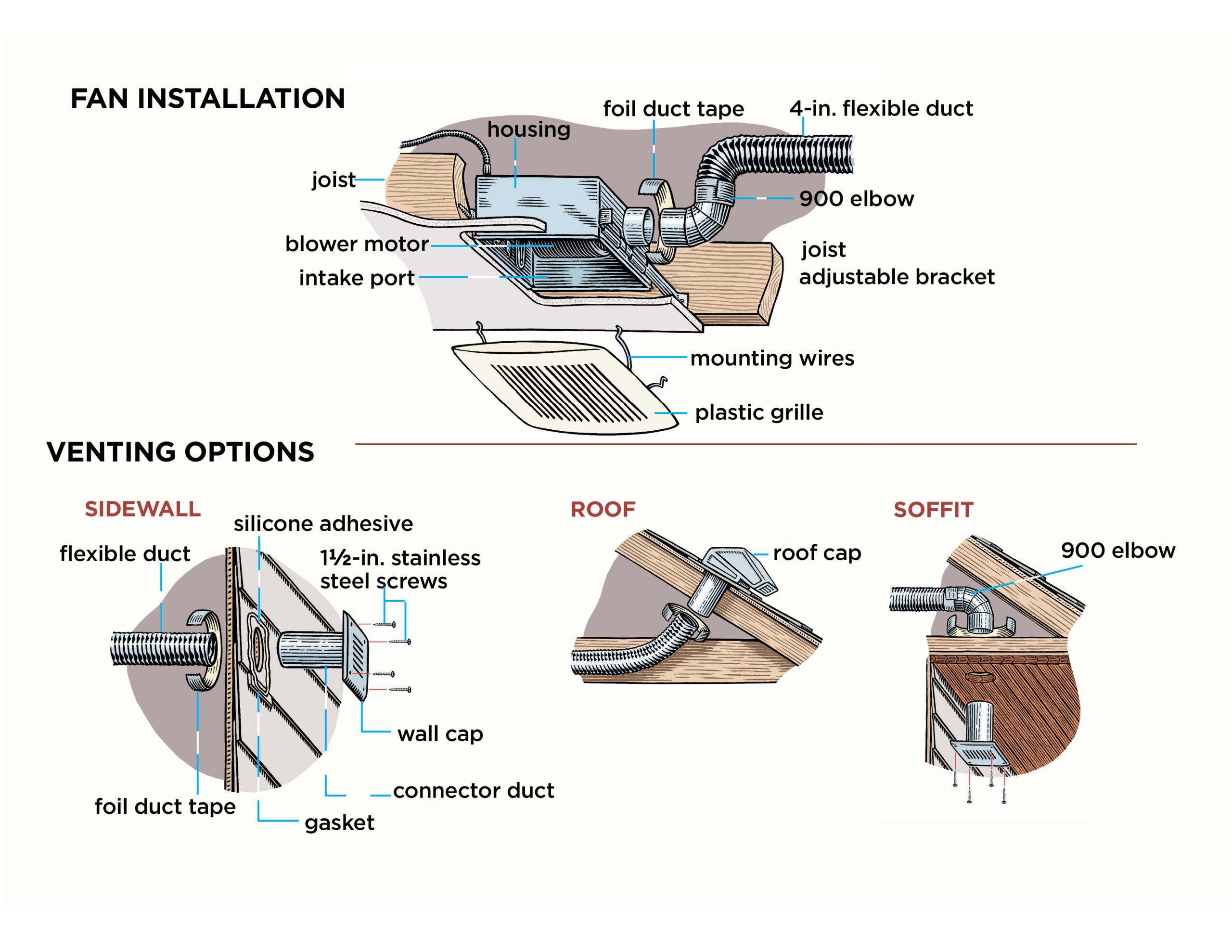Placement Considerations

Where to install bathroom vent fan – The placement of a bathroom vent fan is crucial to ensure effective moisture removal and ventilation. Factors to consider include moisture levels, ventilation needs, and structural limitations.
For optimal ventilation, installing a bathroom vent fan in areas prone to moisture, such as near the shower or bathtub, is crucial. While choosing the right wallpaper for your bathroom can enhance its aesthetics, consider incorporating light green wallpaper to create a serene and refreshing ambiance.
By carefully considering the placement of the vent fan, you can ensure proper airflow and minimize moisture buildup, preserving the beauty of your wallpaper and maintaining a healthy bathroom environment.
Ideally, the fan should be positioned as close to the source of moisture as possible. For bathrooms with showers or bathtubs, the fan should be installed directly above the fixture. In larger bathrooms or those with multiple moisture sources, multiple fans may be necessary.
Positioning Guidelines
- For showers and bathtubs: Install the fan 6-12 inches away from the edge of the fixture, centered above it.
- For toilets: Place the fan 12-18 inches above the toilet, facing the exhaust vent.
- For bathroom sinks: Install the fan directly above the sink, or on the wall opposite the sink.
Installation Methods: Where To Install Bathroom Vent Fan

Installing a bathroom vent fan is a crucial step in maintaining a healthy and comfortable bathroom environment. The process involves electrical wiring, ductwork, and mounting the fan unit. Let’s delve into the details of each step:
Electrical Wiring
Begin by disconnecting the power at the electrical panel. Next, run a dedicated electrical circuit to the location where the fan will be installed. This circuit should be connected to a GFCI (Ground Fault Circuit Interrupter) outlet for safety. Install a junction box at the fan’s location and connect the electrical wires accordingly. Ensure proper grounding and follow all electrical codes.
Ductwork
Determine the appropriate size and type of ductwork based on the fan’s CFM (cubic feet per minute) rating. Cut the ductwork to the desired length and attach it to the fan’s exhaust port using a duct connector. Seal all joints with duct tape or mastic to prevent air leakage. Route the ductwork through the attic or crawlspace to an exterior wall vent.
Mounting the Fan Unit
Cut a hole in the ceiling or wall at the desired location, ensuring it aligns with the ductwork. Connect the fan’s wiring to the electrical circuit and mount the fan unit securely into the opening. Seal any gaps around the fan with caulk or expanding foam to prevent air leaks. Turn on the power and test the fan’s operation.
Different Types of Ceilings and Walls
The installation method may vary slightly depending on the type of ceiling or wall:
- Drywall: Cut a hole using a drywall saw and install a fan-rated electrical box.
- Plaster: Use a plaster saw to cut a hole and reinforce it with a metal frame.
- Suspended Ceiling: Locate the nearest support beam and install the fan between the tiles.
Fan Selection and Features

Choosing the right bathroom vent fan is crucial for effective ventilation. Consider these key factors:
CFM Rating
CFM (Cubic Feet per Minute) measures the fan’s airflow capacity. Determine the bathroom’s cubic footage (length x width x height) and multiply it by 8 for minimum CFM. Larger bathrooms require higher CFM.
Noise Level
Fans are rated in sones, with lower sones indicating quieter operation. Choose a fan with a noise level below 3 sones for a comfortable bathroom environment.
Energy Efficiency
Look for Energy Star-rated fans for optimal energy efficiency. These fans consume less energy while providing adequate ventilation.
Fan Designs, Where to install bathroom vent fan
- Inline fans are mounted in the ductwork, making them less visible and quieter.
- Centrifugal fans are mounted on the ceiling or wall, providing powerful airflow with higher noise levels.
Fan Size and Features
Select a fan size appropriate for the bathroom’s CFM requirements. Consider additional features such as humidity sensors, timers, and LED lights for enhanced convenience.
For optimal ventilation, consider installing a bathroom vent fan on the ceiling, away from water sources. If you own a Nutone bathroom fan, keep in mind that nutone bathroom fan bulb replacement is crucial for maintaining proper airflow. As for positioning, avoid placing the vent too close to walls or furniture, as this can obstruct airflow.